Physical Address
304 North Cardinal St.
Dorchester Center, MA 02124
Ultrasound of the chest plays an important role in diagnosis and treatment of pleural effusion and empyema.
Real-time ultrasound is very useful in evaluation of diaphragmatic motion disorders.
Ultrasound can determine if a neoplastic lesion is solid or cystic.
Doppler and color ultrasound can evaluate vascularity of a lesion and vascular thrombosis.
Ultrasound of the chest is very useful in differentiating among (1) solid mass and large or persistent pleural effusion when there is a totally or partially opaque hemithorax on chest radiographs; (2) round pneumonia and mediastinal mass; and (3) normal thymus and mediastinal mass.
Ultrasound guidance is helpful for interventional chest procedures.
Extracardiac chest sonography is limited by air in the lungs and bone in the thoracic cage. However, ultrasound is valuable for evaluating the abnormal chest in which fluid and solid structures interpose between the chest wall and lung. Sonography is particularly well suited for the evaluation of pleural effusion and empyema. The thymus, liver, and spleen provide windows for chest sonography. Any radiographically opaque chest can be further evaluated by sonography to determine whether there is pleural fluid, a chest mass, atelectasis, consolidation, or lung hypoplasia. Ultrasound may show the pulmonary mass reaching the periphery but may not be able to provide a specific diagnosis. Computed tomography (CT) is required for evaluation of the extent of the mass. Biopsy might be required to arrive at a specific diagnosis.
Ultrasound can be used to guide thoracentesis, chest tube placement, or biopsy of the pleura, the lung, or a mediastinal mass. The indications for extracardiac chest sonography are listed in the accompanying box. Breast, cardiac, and pericardial lesions are beyond the scope of this chapter.
Pleural effusion
Empyema
Pneumonia
Atelectasis
Sequestration
Congenital pulmonary airway malformation
Bronchopulmonary foregut malformation
Diaphragmatic paralysis
Diaphragmatic hernia or defect
Diaphragmatic rupture
Vascular thrombosis
Vascular malformation
Mediastinal, chest wall, and at times pulmonary masses
Thoracentesis
Biopsy of chest mass
Sclerotherapy of lymphatic malformation
Vascular access
Catheter position in vessels
Pneumothorax
Rib fracture
Rib osteomyelitis
Bronchiolitis
Linear transducers with frequencies ranging from 5 to 15 MHz are used for chest ultrasound. Diaphragmatic motion can best be assessed using real-time ultrasound comparison of the diaphragmatic motion on the right and the left sides. Color flow Doppler sonographic imaging is useful to demonstrate vascular supply, which is important in the diagnosis of sequestration. The selection of the frequency of the transducer is inversely dependent on patient size. Higher frequencies are used for infants, and lower frequencies for adolescents.
Sector or vector transducers are used for intercostal and suprasternal approaches. Linear transducers with the long axis of the transducer aligned with the intercostal space can also be used. We have found that the smaller footprint of newer linear transducers provides improved resolution compared with vector transducers using the intercostal window ( Fig. 50.1 ). Newer technology has allowed for increased portability of ultrasound equipment such that some ultrasound probes can connect directly to a tablet or smart phone device. The resolution of these newer devices is currently a limiting factor.
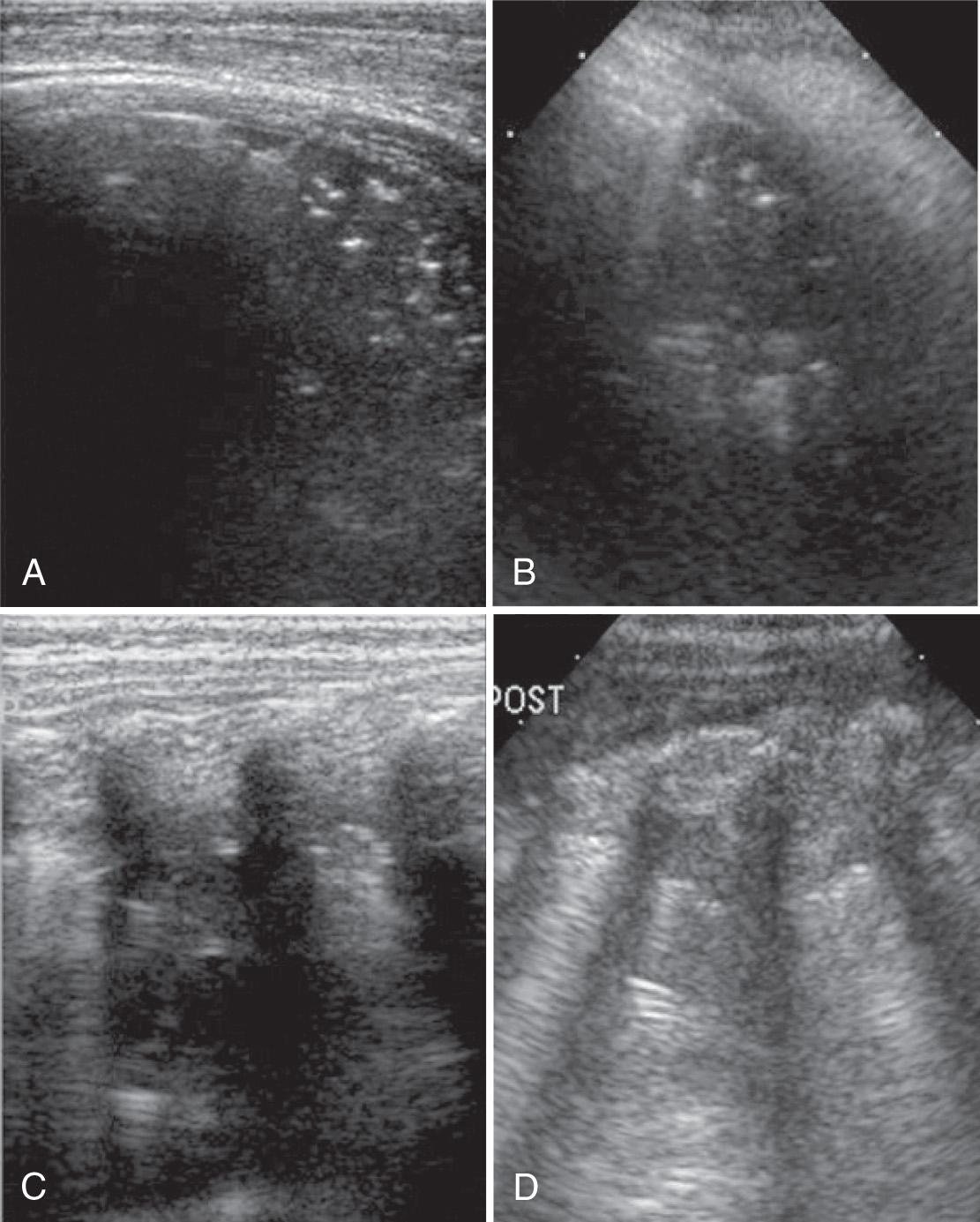
In children younger than 1 year, sternal ossification centers are unfused, the mineral content of the bones and cartilage is lower than in older children, and the thymus is much larger relative to other structures. Acoustic windows through the sternum, costal cartilages, and thymus allow ultrasound evaluation of mediastinal structures. In older children transabdominal ultrasound of the lower chest, including the diaphragm, can be performed using the liver, spleen, or fluid-filled stomach as an acoustic window. Sector, vector, or linear array transducers can be used for this purpose.
Free pleural fluid is dependent in position and will shift with patient positioning. Ultrasound of the dependent areas will identify free pleural fluid. Loculated fluid will necessarily be in a dependent position but may move with positioning.
Three longitudinal planes are used for assessment of the mediastinum ( Fig. 50.2 ): right parasagittal plane through the superior vena cava (SVC), sagittal plane through the aortic root, and left parasagittal plane through the pulmonary outflow tract. Two distinct transverse planes through the mediastinum are also routinely used ( Fig. 50.3 ): the superior plane at the confluence of the brachiocephalic veins and SVC and a lower transverse plane where the SVC, aorta, and pulmonary outflow tract are visualized.
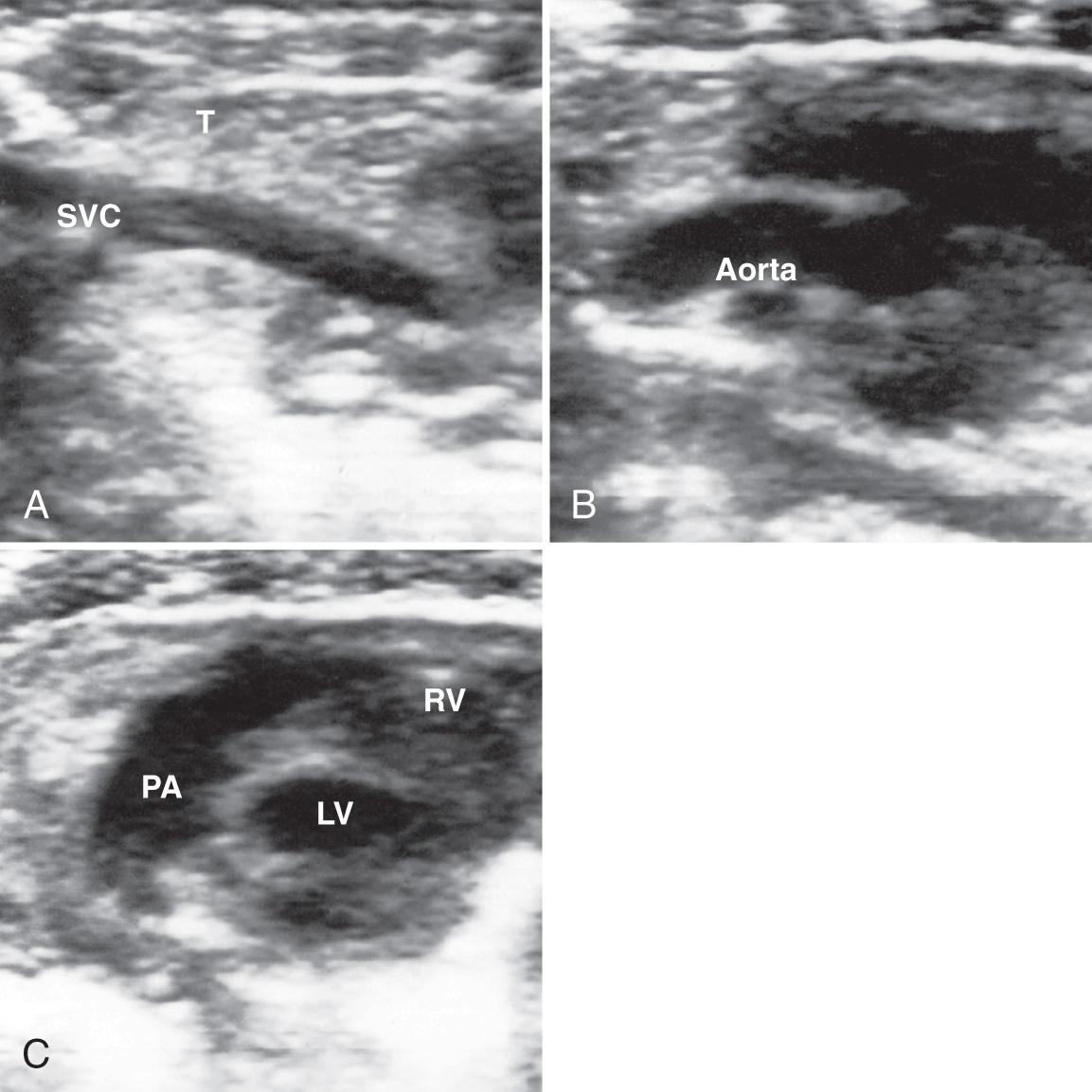
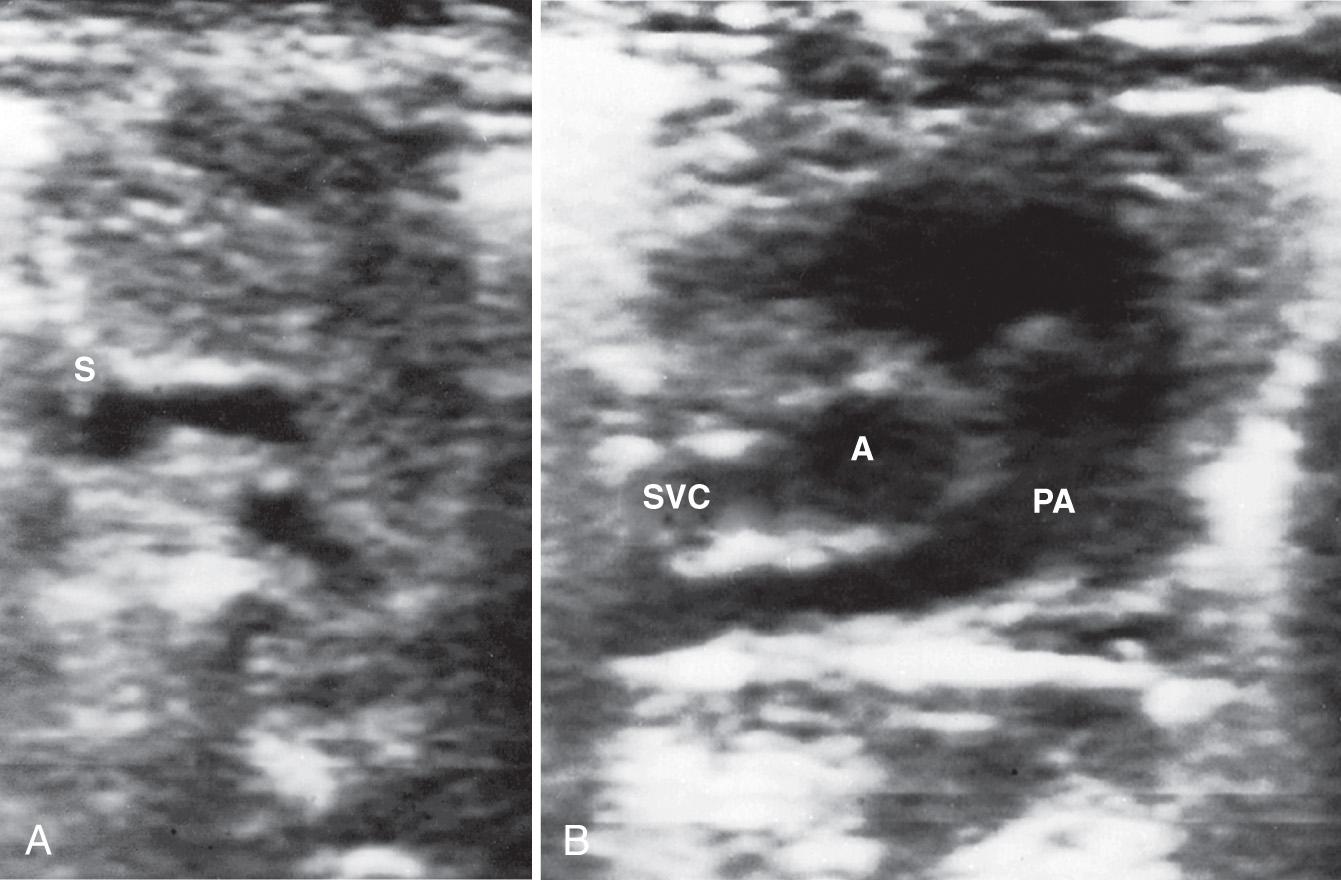
The most frequent use of chest sonography is for the evaluation of a completely radiopaque hemithorax ( Fig. 50.4 ) or a partially radiopaque hemithorax ( Fig. 50.5 ). Ultrasound distinguishes pleural from pulmonary causes of opacification. Chest ultrasound is more sensitive than decubitus radiographs for detecting small amounts of pleural fluid ( Fig. 50.6 ). Pleural fluid collections less than 4 mm in thickness can be physiologic and detected in normal children placed on their elbow after lying for 5 minutes in a left lateral decubitus position. Because pleural effusions transmit sound waves, they allow for visualization of structures deep to the pleura that are not normally identifiable.
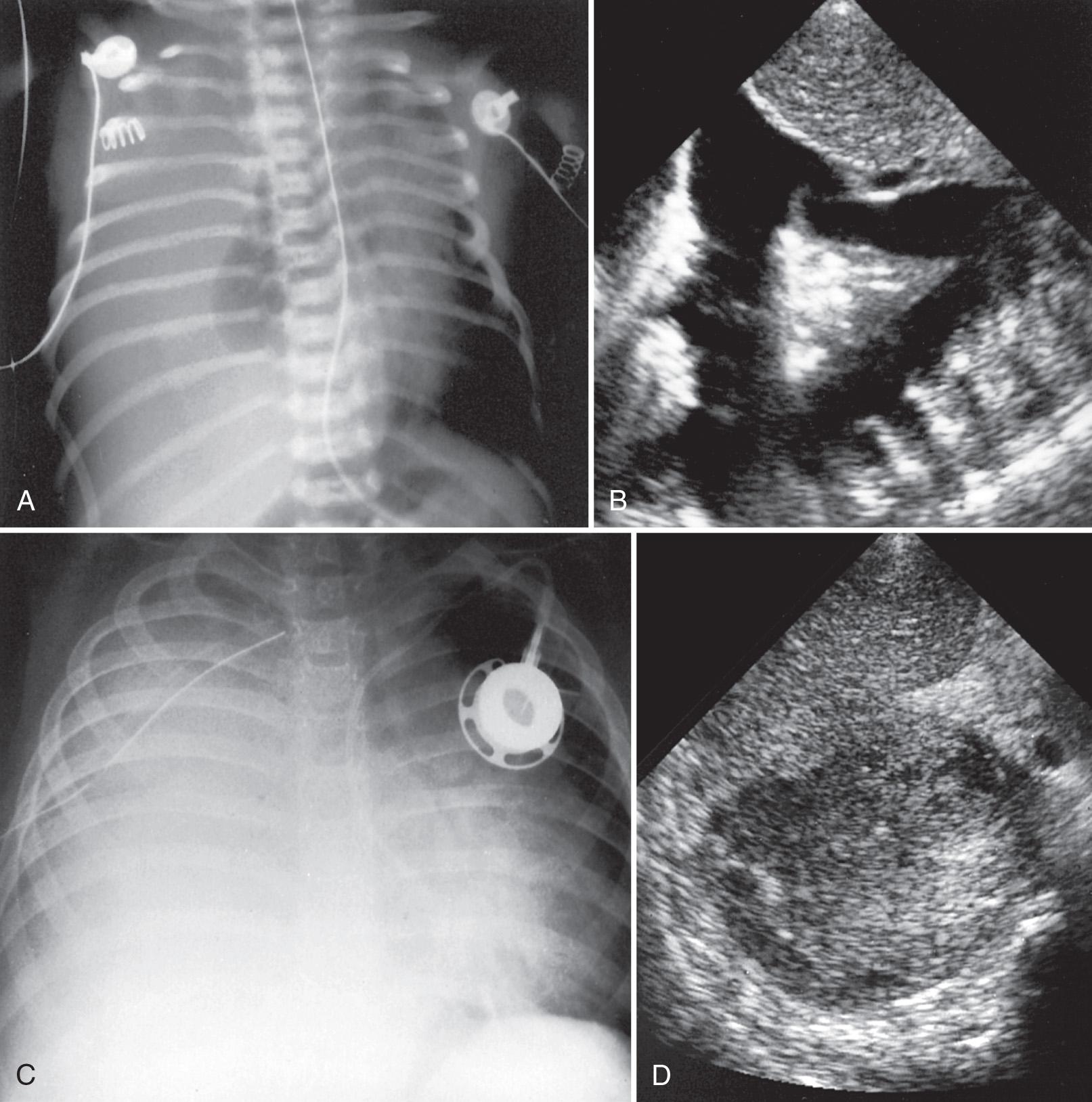
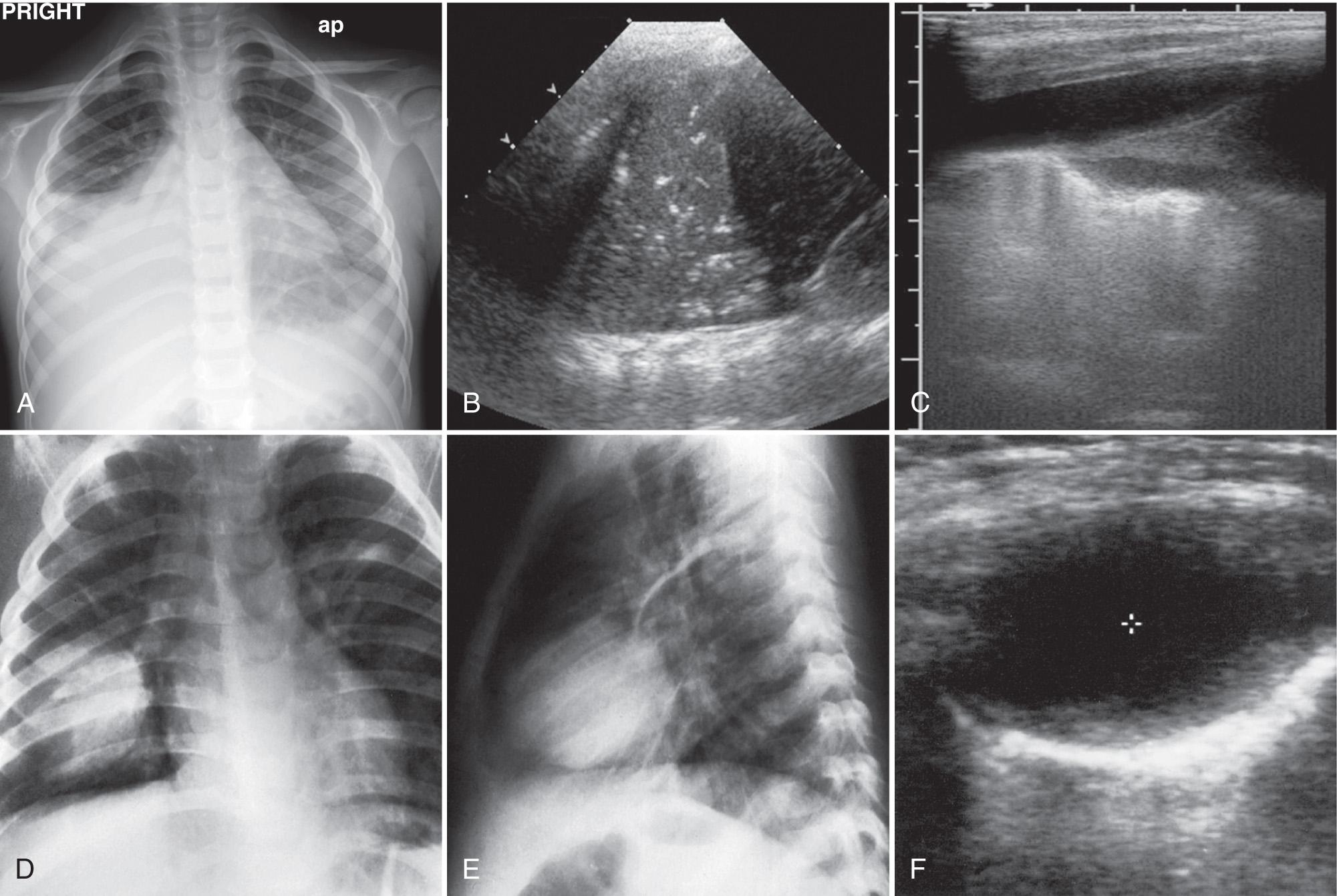
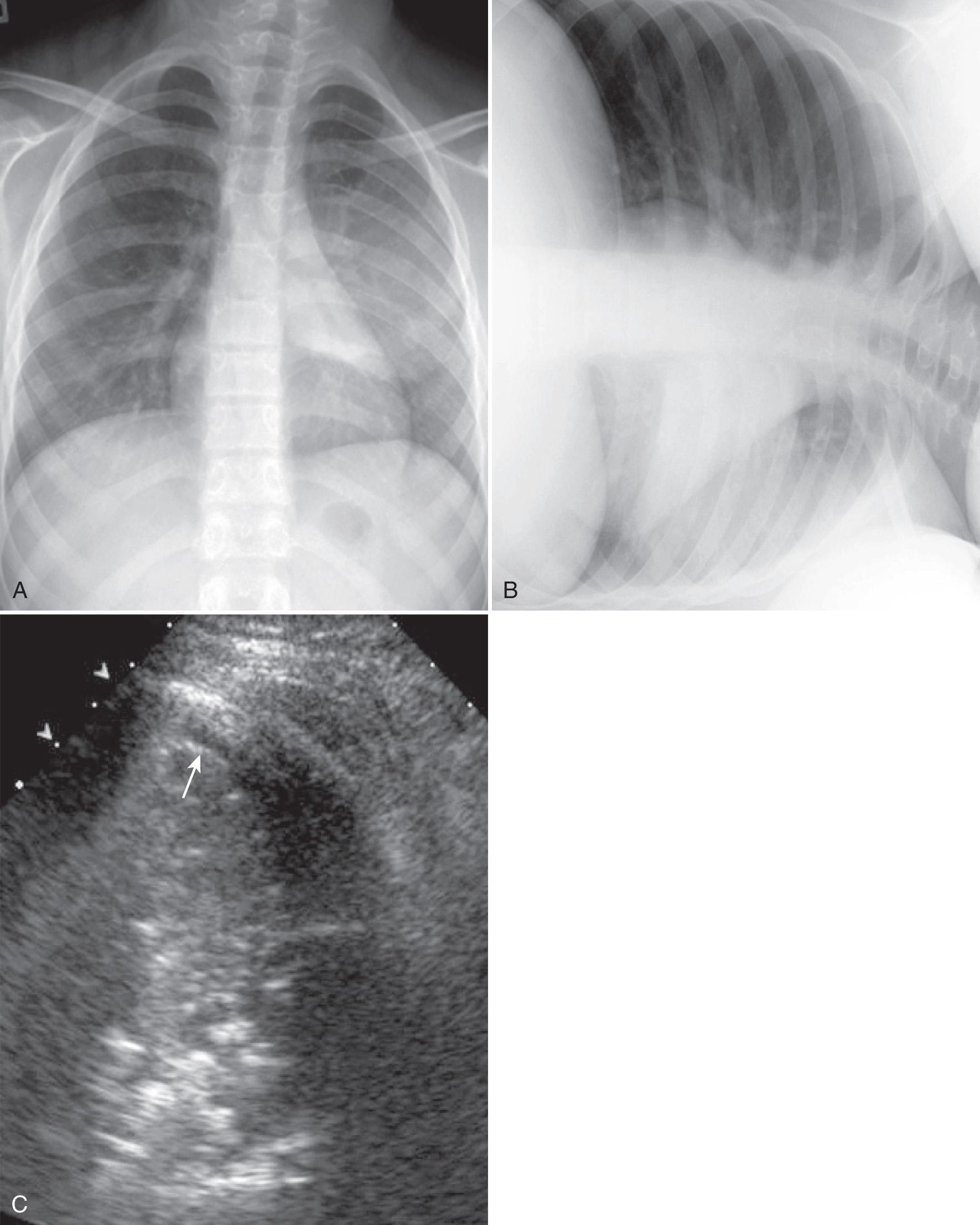
Intercostal and subdiaphragmatic windows are used to access the pleural space. The spleen and liver are good windows to the pleural space because they are relatively homogeneous solid organs that provide good through transmission ( Figs. 50.7 and 50.8 ). The classic appearance of transudative pleural effusion is an echo-free or hypoechoic collection without septations immediately deep to the chest wall. However, it should be recognized that exudates can also be anechoic and that transudative pleural effusions are anechoic and nonseptated in only 45% of patients. Therefore echogenicity in pleural collections does not exclude the diagnosis of a transudate.
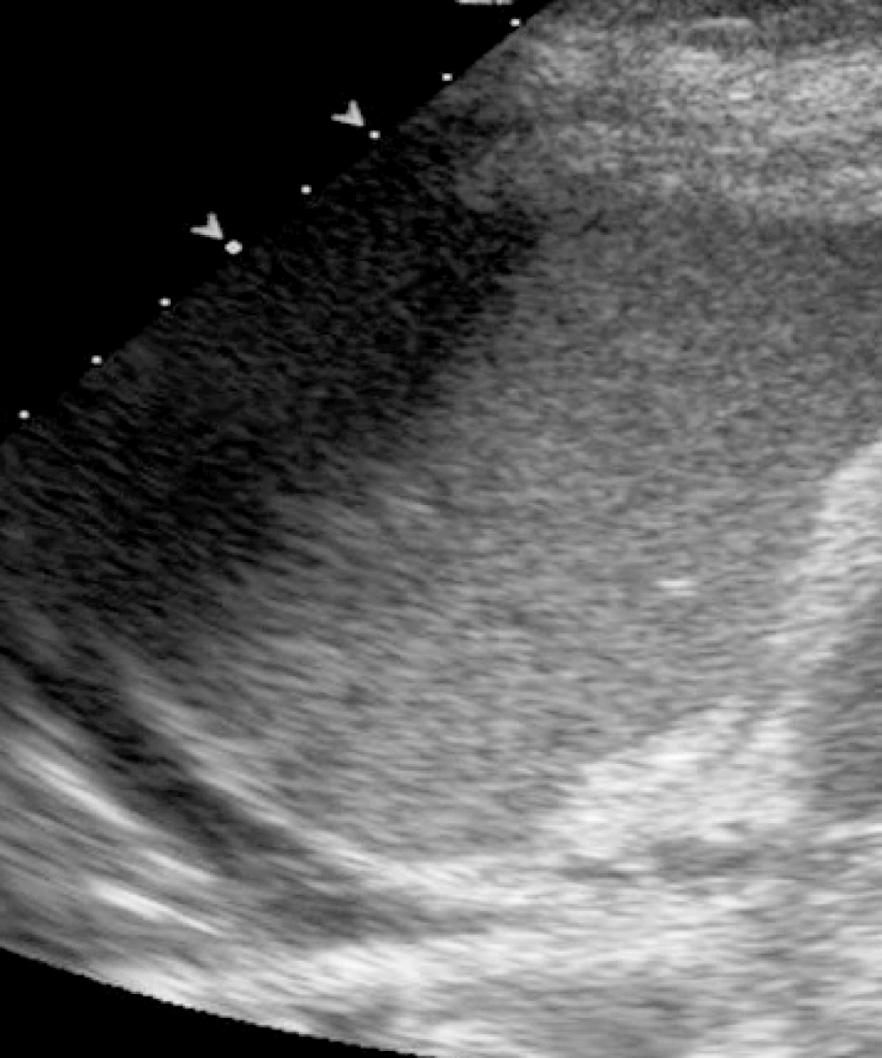
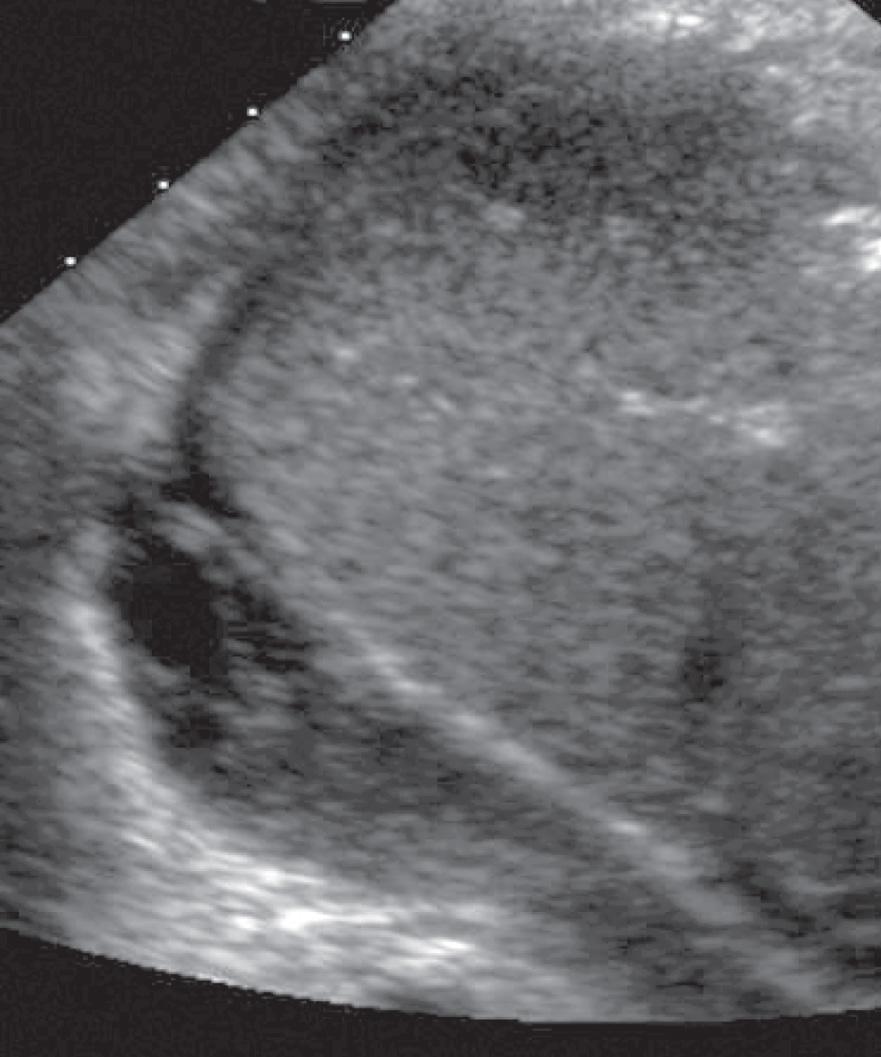
Exudates are usually complex collections with internal echoes and associated fibrin septations. The collections may be multiloculated with a honeycomb appearance. Exudates are associated with pleural thickening and underlying parenchymal abnormality. Complex collections such as a hemothorax ( Fig. 50.9 ) or empyema ( Fig. 50.10 ) have thicker fluid with septations ( Fig. 50.11 ). Underlying consolidated or atelectatic lung is more echogenic than an effusion. Complicated effusions are characterized by an irregular or indistinct interface between pleura and the adjacent lung. A fibrothorax has a thick pleural rind that is echogenic. Multiple hyperechoic foci in the lung are caused by residual air within bronchi and alveoli and are called sonographic air bronchograms ( Fig. 50.12 ).
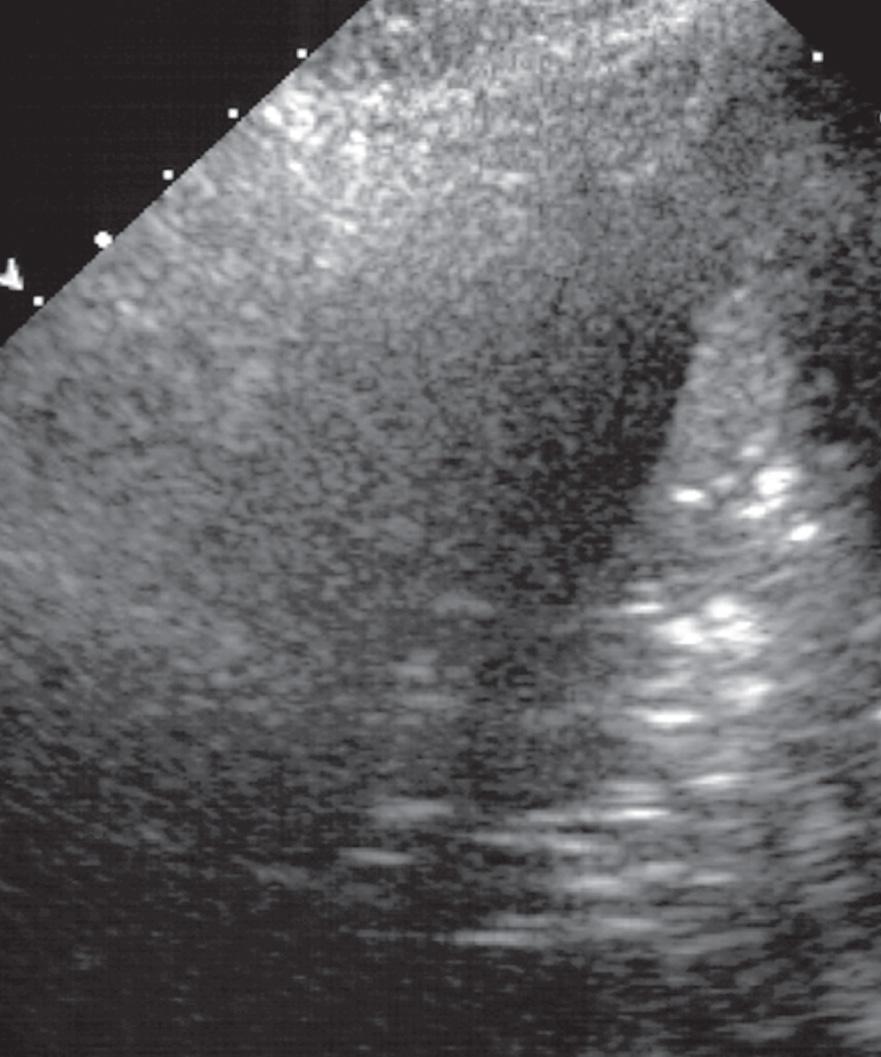
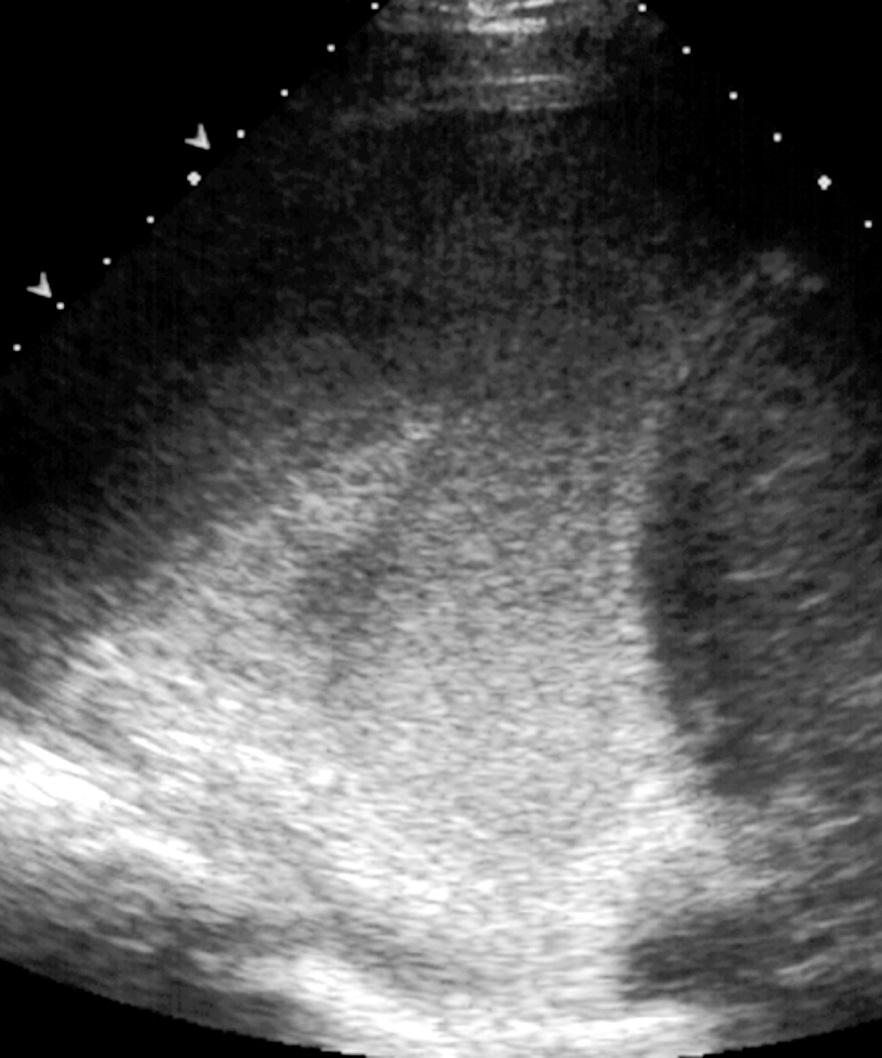
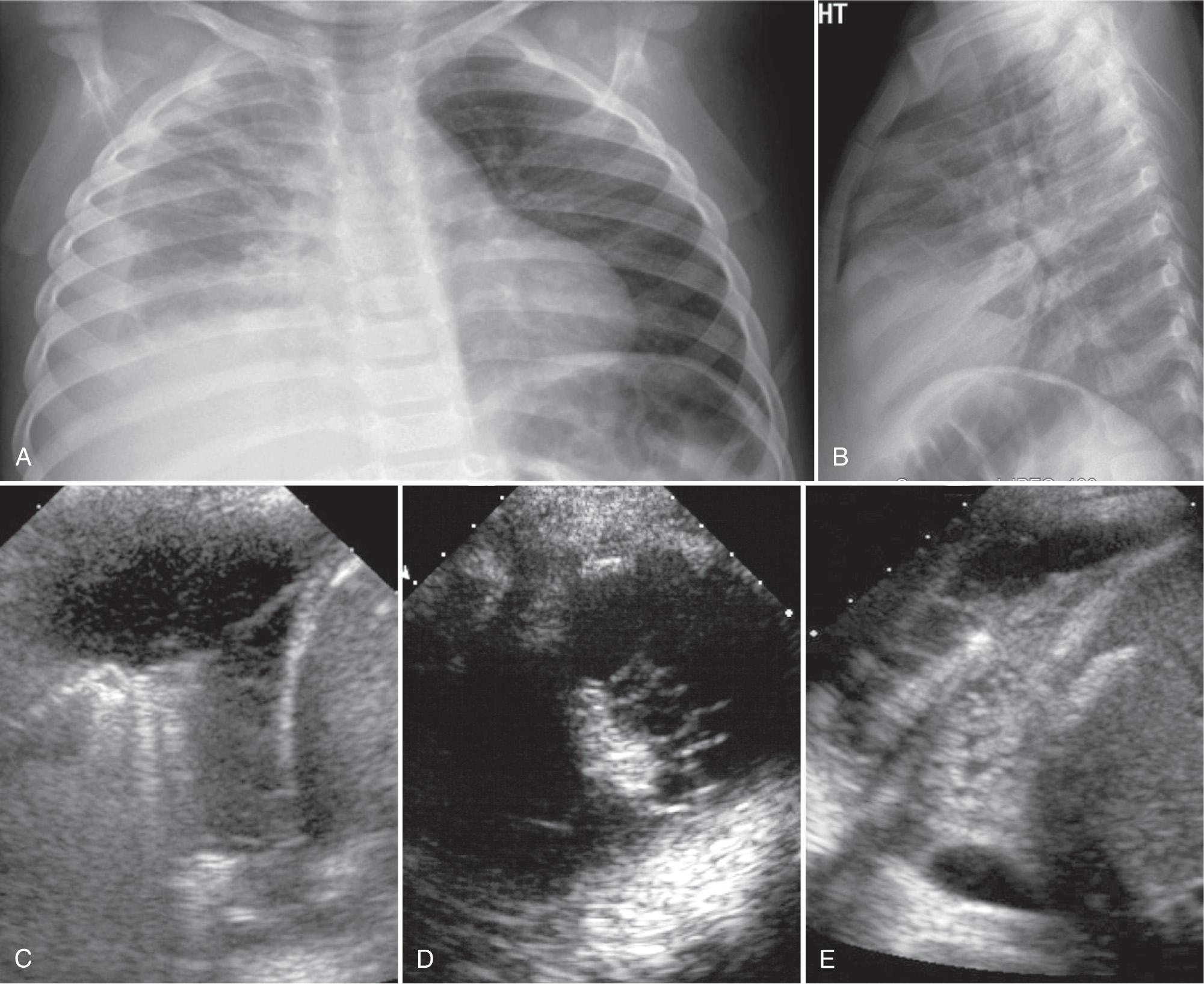
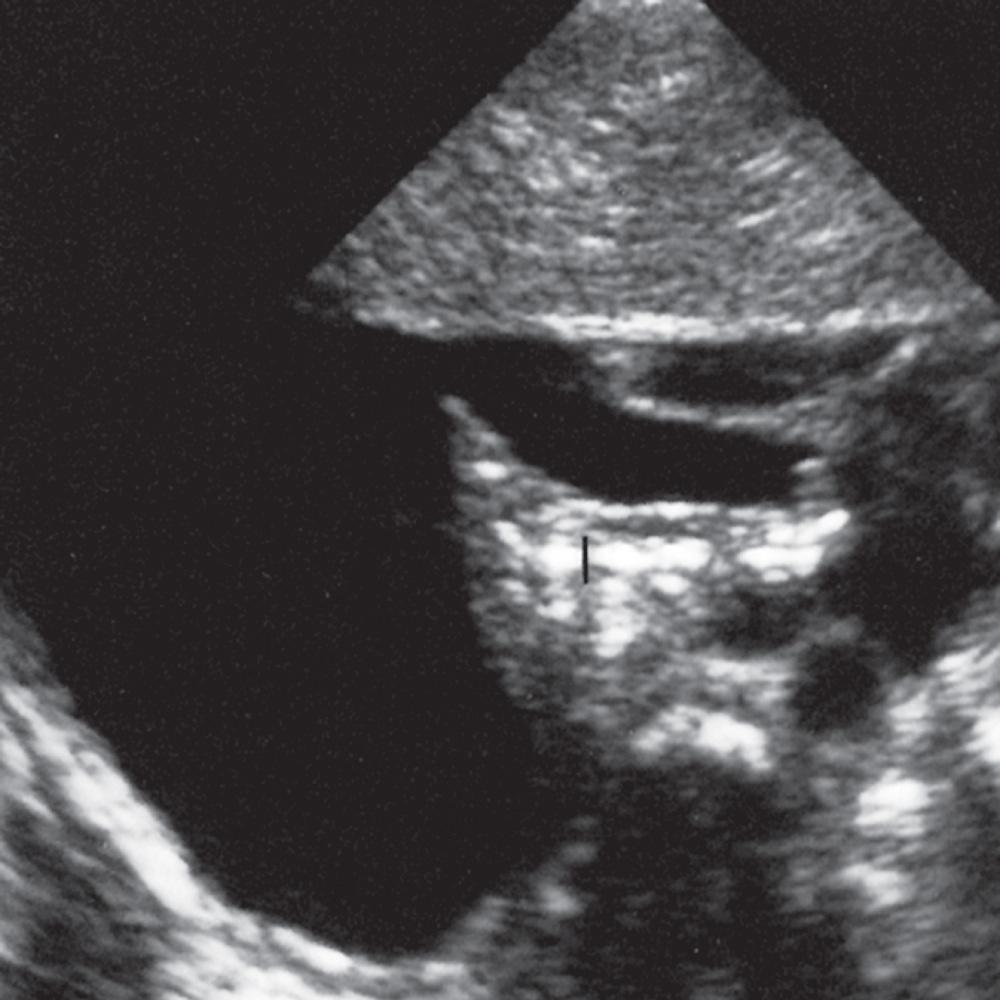
Fluid collection deep to the chest wall and/or above the diaphragm
Posterior chest wall visualized behind the fluid
Free fluid moves with respiration
Septations move if fluid is loculated
Color Doppler signal between visceral and parietal pleura and/or at costophrenic angle
Diaphragm sign (fluid outside or peripheral to diaphragm)
Displaced-crus sign
Bare-area sign
Free fluid changes position with changes in the patient's position. Fluid will move posterior to the liver and lungs when the patient is in a supine position ( Fig. 50.13 ). When the patient is upright, the fluid will move between the lung and the diaphragm. Free fluid is indicated by change in the shape of pleural fluid with inspiration and expiration and the presence of moving septations within the pleural fluid ( ). These septations are fibrin strands.
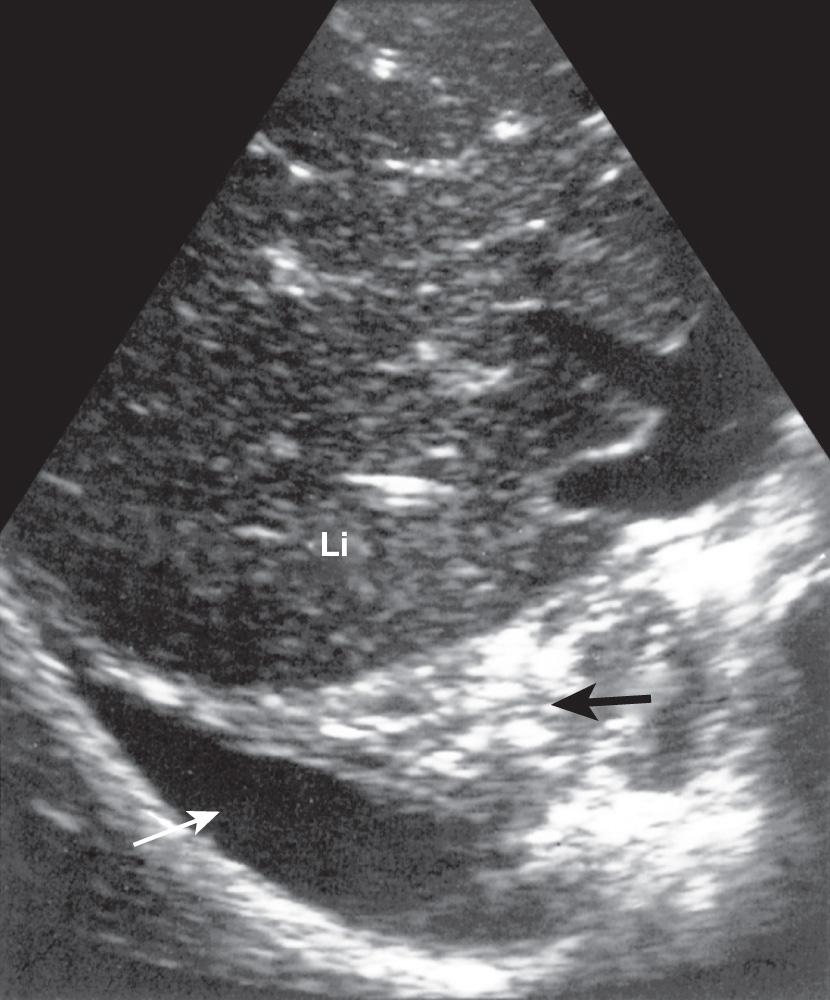
Color flow Doppler ultrasound aids in distinguishing pleural effusion from pleural thickening. Color Doppler signal is identified during respiratory motion between the visceral and parietal pleura in the presence of pleural effusion. Cell movement, debris, and fibrin scatter sound waves, producing the color flow Doppler signal in the pleural fluid collection ( Fig. 50.14 ). Organized pleural thickening will appear as a colorless pleural lesion with no Doppler signal. The color flow Doppler signal has high sensitivity and specificity in determining if a fluid collection can be aspirated. The fluid color flow Doppler signal is particularly useful in distinguishing if small, loculated collections can be aspirated.
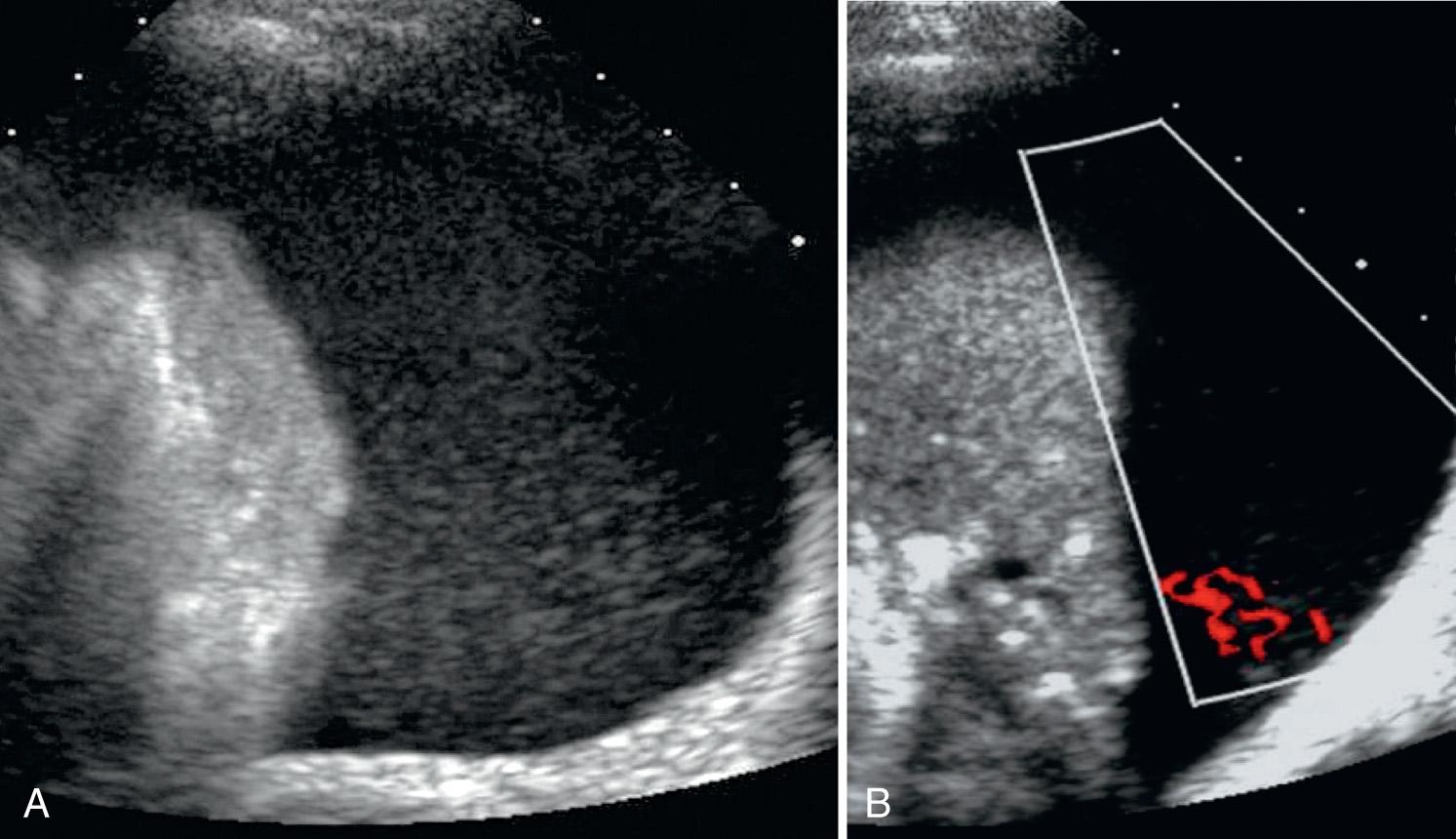
Become a Clinical Tree membership for Full access and enjoy Unlimited articles
If you are a member. Log in here